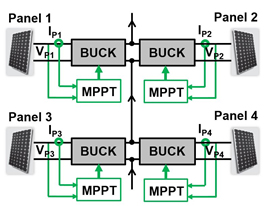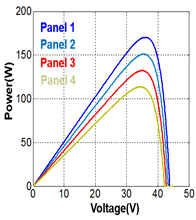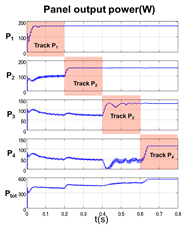
Fig. 1. (a) Existing and proposed distributed MPPT method for smart converter PV systems: Previous MPPT solution for smart converter.
To improve PV system energy harvesting efficiency under mismatch conditions, a panel-level MPPT converter, or what we call a smart converter, has been developing very rapidly in recent years. In the smart converter PV system, each panel has a dedicated MPPT converter to improve energy production. In this dedicated converter, a voltage and current sensor are required to calculate the panel output power, and a MPPT controller is also needed for peak power tracking, as shown in Fig. 1(a). Although the dedicated converters can extract maximum power from the PV panels, the equipment cost is high. To reduce the cost and simplify MPPT control, a novel MPPT method with less sensor and controller is proposed, as shown in Fig. 1(b).
To verify the proposed MPPT solution, a simulation is performed, the results of which are shown in Fig. 2. In this simulation, four panels have non-uniform irradiance, as shown in Fig. 2 (a). Firstly, the controller tracks the MPP for Panel 1, and fixes the output power of the other three panels, as shown in Fig. 2 (b). After finding the MPP for Panel 1, the controller tracks the MPP for Panel 2 and fixes the output power of the other three panels. Using the same method, the controller can track the MPP of the four panels one by one, as shown in Fig. 2 (c).

Fig. 1. (b) Proposed MPPT solution for smart converter.

Fig. 2. (a) Simulation results for the proposed MPPT solution for a cascaded smart converter: P-V curve of four panels

Fig. 2. (b) Start-up panel voltage.

Fig. 2. (c) Start-up panel power.



























































































